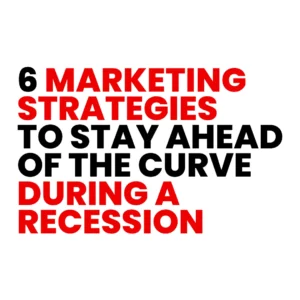A company’s logo is frequently the first impression it makes on potential customers. It represents the identity and values of a brand visually. As a result, it is critical that a company’s logo accurately reflects its message and appeals to its target audience. However, a company’s identity, values, and target audience may change. In such cases, redesigning the logo may be necessary to keep it relevant and effective. This article will look at the process of redesigning a logo and the factors to consider before logo redesign. We will examine the research, design, and implementation processes and suggest a successful redesign. This article will provide valuable insights whether you are a business owner looking to refresh your image or a designer looking to work on a logo redesign project.
Key Ideas
- Redesigning a company’s logo is a vital step to approach thoughtfully and strategically.
- The critical steps in redesigning a logo are research, concept development, sketching and ideation, design exploration, refining and finalizing the design, and presentation to stakeholders.
- When redesigning a logo, it is critical to consider factors such as brand identity, target audience, competitors, industry trends, and evolving business goals.
- Implementing a logo redesign can be complicated, as it involves developing a strategy, updating materials, training internal teams, and distributing to external audiences.
- A brand should measure a logo redesign’s impact and effectiveness, which it can accomplish by establishing a method for tracking its success.
- Professional logo designers can help you navigate the redesign process and provide design solutions that are consistent with your brand’s identity and target audience.
- A logo redesign is an opportunity to refresh and revitalize a company’s image while creating a logo that represents the company and resonates with the target market.

Things to Consider Before Redesigning a Logo
Brand Identity
Before redesigning a logo, it’s critical to understand the brand’s identity. A company’s mission, vision, values, and target audience should all be accurately reflected in its logo. The redesign should improve, not harm, the brand’s image. Consider the company’s history and previous branding efforts. A redesign should enhance rather than replace the existing brand identity.
A luxury car brand, for example, would want to maintain a sense of elegance and exclusivity in its logo redesign. On the other hand, a sports brand’s redesign would need to communicate energy, motion, and power. Consider the company’s history as well as any previous branding efforts. A redesign should enhance rather than replace the existing brand identity.
Demographics of the Audience
When redesigning a logo, it is critical to consider the target audience. The logo should appeal to the target audience while effectively communicating the brand’s message. Understanding demographic factors such as age, gender, income, education, and occupation can help guide design decisions.
For example, a logo redesign for a children’s toy company would be distinct from one for a financial services company. The former would be designed with bright colours and playful imagery, whereas the latter would be more professional and serious. Therefore, it is critical to consider what kind of message and feeling the logo should elicit in the target audience.
Competitors
The logo should also stand out among industry competitors. Researching similar company logos and understanding how they position themselves visually is critical. This can provide insight into what works and doesn’t in the industry. However, avoiding directly copying other logos or employing similar design elements is also critical. A logo should be distinct from others in the industry and unique to the brand.
Trends in the Industry
When redesigning a logo, keeping current industry trends in mind is essential. For example, if minimalism is popular in design, a logo with many flourishes and embellishments might be less effective. Similarly, if flat design is popular, a logo with many gradients and 3D elements may look dated. By keeping up with industry trends, a logo redesign can remain current and relevant.
Changing Business Objectives
A company’s goals and objectives may change over time, necessitating a logo redesign. For example, a company previously focused on B2B sales may shift its focus to B2C sales, and the logo should reflect this shift. Alternatively, if a company wishes to expand into new markets, it can redesign the logo to be more globally appealing. It is critical to consider how the company’s goals and objectives have changed and how the logo redesign can help them.
To summarise, redesigning a logo is a complex process that necessitates careful consideration of numerous factors. A logo should be unique and easily distinguishable from competitors while aligning with the brand’s identity, target audience, and industry trends. Furthermore, the logo should support the company’s evolving goals and objectives. If these factors are considered, a redesign can be a successful and effective way to refresh a company’s image.
Essential Questions to Ask When Considering a Logo Redesign
1. What are the company’s current goals and objectives, and how can the logo redesign help them?
This question is critical in understanding how the logo redesign can support the company’s strategic goals and objectives. This can include entering new markets, reaching out to new customer segments, or changing the company’s image. In addition, you can ensure that the logo redesign will effectively achieve the company’s goals by aligning them with them.
2. Who is the intended audience, and how can the logo effectively appeal to them?
Knowing your target audience is critical for developing a logo that effectively communicates your brand’s message. This will assist you in determining which design elements, colours, and overall style will appeal to the target audience. For example, a logo designed for a toy company differs from a logo designed for a financial services company. This question assists you in determining who you are attempting to reach and how best to appeal to them.
3. What is the current logo’s relationship to the company’s mission, vision, and values?
This question helps determine whether the company’s current logo accurately reflects its mission, vision, and values. If it does not, it may be time for a redesign. Furthermore, understanding how the current logo aligns with the brand’s identity components can help guide the redesign process.
4. How does the current logo compare to industry competitors?
This question lets you see how your current logo compares to your competitors’ logos in the industry. It is critical to understand what works and what doesn’t in the industry and any similarities and differences between your logo and your competitors’. You can use this information to make informed decisions during the logo design process.
5. What are the current industry trends, and how can the logo redesign keep up with them?
Knowing current industry trends is essential for keeping the logo redesign current and relevant. Different design styles, colours, and techniques may be more prevalent at other times, and it is critical to keep these trends in mind when creating a logo. The logo should appear and feel current rather than dated.
6. What design elements have previously been used in branding efforts, and how can we incorporate or evolve them in the redesign?
This question can help you understand how the business carried out previous branding efforts and what the designer used as design elements. This data can inform design decisions for the redesign and ensure consistency across various branding materials.
7. Will the logo redesign affect the company’s branding in any other way (stationery, website, marketing materials)?
It is critical to consider how the logo redesign will affect other company branding aspects. This can include updating business cards, letterheads, and websites and creating new marketing materials. This will aid in the planning and budgeting of the redesign, ensuring that all branding materials are consistent and coherent.
8. How will the internal team and external audience be informed about the logo redesign?
It is critical to have a strategy to communicate the redesign to the internal team and the external audience. Training materials, guidelines, and a communication plan are examples. The plan should clearly explain why the redesign is being done and how it fits the company’s goals and values.
9. What guidelines or training will be required to implement the new logo?
It is critical to consider how the new logo will be implemented and what guidelines or training will be required. This can include developing guidelines for using the logo, providing training materials to internal teams on how to use the new logo, and setting policies for any external partners or vendors who may need to use the new logo. It is critical to ensure everyone understands how to use the new logo correctly to maintain consistency and protect the brand’s integrity.
10. How will the logo redesign impact be measured?
It is critical to develop a method for measuring the impact of the logo redesign. You can include metrics such as brand recognition, customer engagement, and sales. Establishing a method to measure the redesign’s success will allow you to assess whether it was successful and identify areas for improvement. This will ensure that the redesign is a worthwhile investment for the company.
These are some important questions to ask when considering a logo redesign. By asking and answering these questions, you can ensure that the redesign process is well thought out, aligns with the company’s goals, and effectively achieves them.
The Logo Redesign Process
Redesigning a logo is a complex process that necessitates careful consideration of various factors, such as research and concept development, sketching and ideation, design exploration, refining and finalizing the design, and presentation to stakeholders. By following this process, you can ensure that the new logo accurately reflects the company’s mission, vision, and values, aligns with the target audience and is consistent with industry trends. Involving key stakeholders throughout the process also helps ensure that the redesign aligns with and is an effective tool for achieving the company’s goals and objectives. To ensure a smooth transition to the new logo, consider the practical aspects of the redesign, such as logo usage guidelines, training, and communication plans. Here are 5 steps for redesigning a company’s logo;
1. Conduct research and develop a concept.
The first step in the logo redesign is researching and creating new concepts. One example is gathering information about the company’s mission, vision, values, target audience, and industry trends. The research can also include looking at competitor logos and determining what works and what doesn’t. This information can help develop preliminary concepts for the new logo.
During this stage, it is also critical to solicit feedback from key stakeholders, such as company executives and marketing or branding team members. They can provide helpful information about the company’s goals and values and their vision for the new logo. This step is critical in developing a logo consistent with the company’s identity and appealing to the target audience.
2. Ideation and sketching
Sketching and ideation are the next steps in the logo redesign process. First, designers will create rough sketches and ideas for the logo and mood boards to experiment with different styles and elements.
At this stage, designers should involve other team members and stakeholders, such as marketing and branding experts, to get feedback on concepts and ideas. This will help ensure the final design aligns with the research and concept development stages and the company’s goals and values.
3. Design Research
Design exploration is the next step in the logo redesign process. During this stage, designers expand on the concepts and ideas generated during the sketching and ideation stages. They experiment with different design elements, typography, and colour schemes to create more detailed and polished versions of the logo. This is the time for designers to delve deeply into the various concepts and create final logo versions.
It is critical to have a transparent process for gathering feedback from key stakeholders during this stage to ensure that the final design aligns with the company’s goals, values, and target audience. Surveys, focus groups, and user testing are examples of such activities.
4. Design Refinement and Finalization
The following step in the logo redesign process is to refine and finalize the design. This is the stage at which the final version of the logo is chosen and all the details are refined. Designers will collaborate closely with stakeholders to finalize the design, such as fine-tuning the typography, colour scheme, or layout. Once all stakeholders have approved the final version of the logo, it is ready for final production, which includes creating different versions of the logo for various applications and a style guide.
5. Stakeholder Presentation
Presenting the new logo to stakeholders is the final step in the logo redesign process. This is the moment when the final version of the logo is revealed, and everyone can see the new design. This step is critical for gathering feedback from all stakeholders and making final adjustments before the product is released to the public.
This step also entails developing a roll-out strategy, which includes developing guidelines for using the logo and training internal teams on the new design. Finally, consider the communication plan for external audiences such as customers, suppliers, and partners to ensure a smooth transition.
How to Carry Out Logo Redesign Implementation
The brand will implement the redesign after a new logo has been designed and approved. A logo redesign entails implementing the new design and updating all materials that feature the old logo. This process can be complicated, especially for businesses that use various online and offline branding materials. However, here are a few key steps to ensure a successful implementation:
Step 1: Make a Strategy
Create a plan for implementing the new logo, including a timeline, budget, and a list of materials that need to be updated. Establishing clear goals and objectives for the redesign, such as increasing brand recognition or updating the company’s image, is critical to ensure the plan aligns with these goals.
Step 2: Refresh All Materials
One of the most important steps in implementing a logo redesign is updating all materials that feature the old logo. Examples include business cards, letterheads, websites, packaging, marketing materials, and other materials. To ensure that the brand’s image is consistent across all platforms, you must update all materials promptly and consistently.
Step 3: Internal rollout
Before releasing the new logo to the public, informing and training the internal team about the redesign and its reasons is critical. This can include developing training materials and guidelines for using the new logo and holding workshops or team meetings to ensure everyone is on the same page. This step is critical for gaining internal support for the redesign and ensuring that the new logo is used correctly throughout the organization.
Step 4: Extend the rollout to the public.
When the internal team is trained and ready, it is time to introduce the new logo to external audiences. Customers, suppliers, partners, and the general public can all be included. It is critical to have a communication strategy that explains why the redesign is being implemented and how it aligns with the company’s goals and values. Email campaigns, social media posts, press releases, and launch events are examples.
Step 5: Track and evaluate the results.
Monitoring and measuring the impact of the redesign is the final step in logo redesign implementation. You can include brand recognition, customer engagement, and sales metrics. Establishing a method to measure the redesign’s success will allow you to assess whether it was successful and identify areas for improvement. This will help ensure that the redesign was a worthwhile investment for the company.
Implementing a logo redesign can be a complicated process. Still, by developing a strategy, updating all materials, rolling out internally and externally, and tracking the impact, you can ensure that the new logo is effectively integrated into the company’s branding and that the redesign was worthwhile. Obtaining feedback and measuring the impact of the redesign will also aid in identifying changes and how the new logo resonates with the target audience.
Conclusion
To summarise, redesigning a logo is an essential step for any business, and it is critical to approach the process thoughtfully and strategically. A redesign can effectively refresh a company’s image by considering factors such as brand identity, target audience, competitors, industry trends, and evolving business goals. Furthermore, a redesign can be executed successfully and effectively by following a process that includes research and concept development, sketching and ideation, design exploration, refining and finalizing the design, and presentation to stakeholders.
It is also essential to consider the logistics of logo redesign implementation, such as developing a strategy, updating all materials, rolling out internally and externally, and monitoring and measuring the redesign’s impact. Implementing a logo redesign can be difficult, but following the steps outlined above is doable.
Hire a Logo Designer in Lagos
Many talented professionals can guide you through the process. If you are looking for a logo designer in Lagos or anywhere else in Nigeria, you are at the right place. My logo design solutions can be tailored to your brand’s identity, target audience, and industry trends, resulting in a logo that accurately represents your company and resonates with your target market. Contact me now and begin the process of refreshing and revitalizing your brand.




